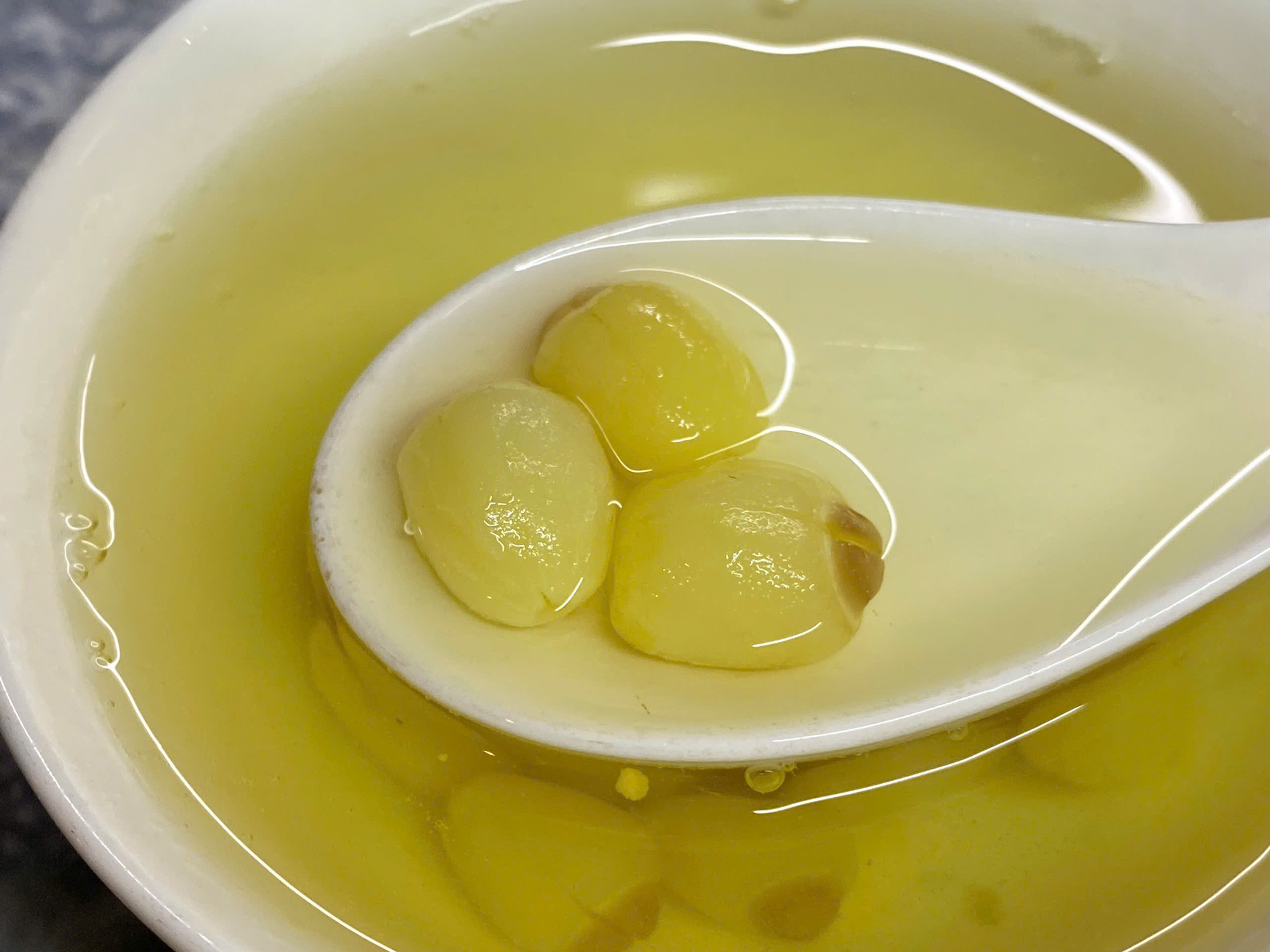
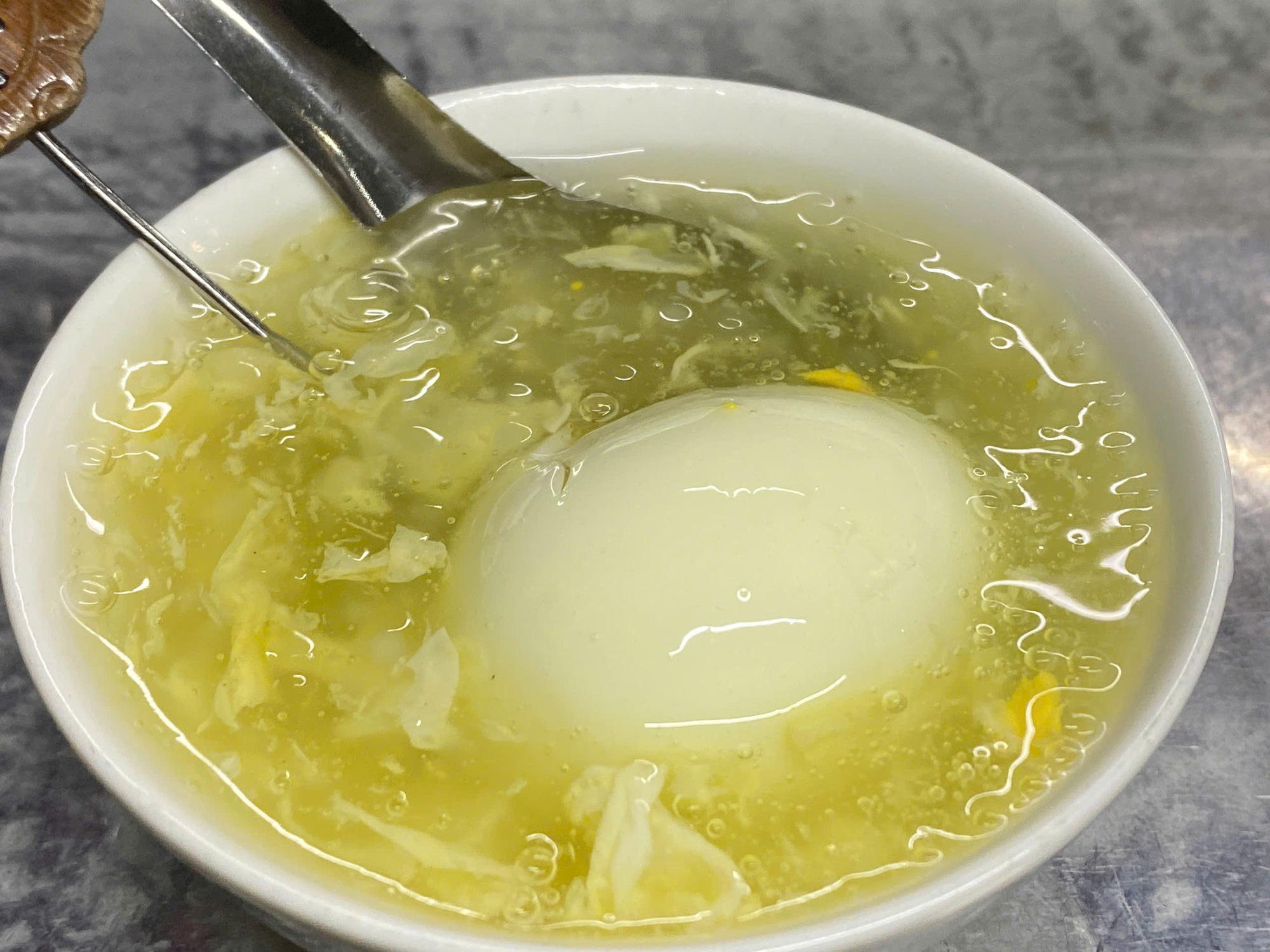
A hot cup of tea and the warm atmosphere at Lam Vinh Mau tea cart makes many people come back - Photo: DANG KHUONG
Visiting the shop on a rainy evening, customers suddenly feel cozy sitting around the always "fired up" sweet soup cart.
The owner is an old Chinese man, the current house is built in the Teochew culture. He himself can no longer speak Chinese.
When asked, he told Tuoi Tre Online that he did not want to share any information, he just wanted diners to sit down, enjoy and chat with him, so that they could contemplate and understand the flavor of the dish.
The tea cart is named after its first owner - Lam Vinh Mau tea.
That name is not only famous among the locals but also arouses the cravings of customers from far away provinces, to the point that "when coming to Saigon, you have to stop by for a bowl and then do whatever you want".
Lam Vinh Mau Tea: "Magic" to keep the aroma
The tea cart is located on Nguyen Thai Binh street, often selling at night.
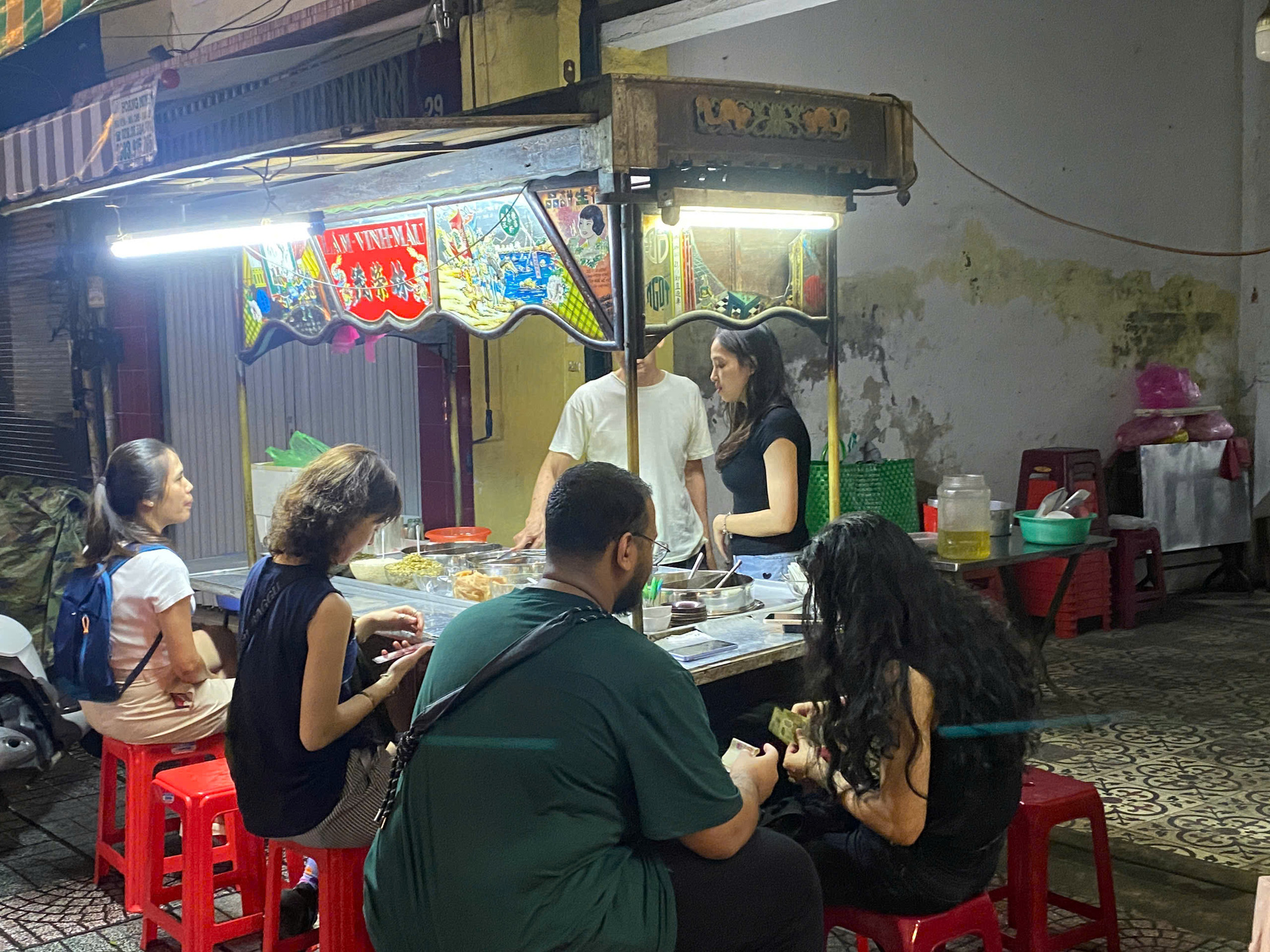
The sweet soup cart has existed for more than 65 years with a slow pace of life in the middle of bustling Saigon - Photo: DANG KHUONG
In 1958, Mr. Lam Vinh Mau was the one who "founded" the tea cart bearing his name in Saigon. Later, he moved abroad to settle down, so his two grandchildren "took over" the business until now.
Upon arriving at the restaurant, diners are easily impressed by the wooden cart, which is engraved with motifs containing ancient Chinese stories. The center of the motifs is the signboard with the name Lam Vinh Mau.

Many dishes are displayed, making diners confused about their choice - Photo: DANG KHUONG
As soon as they sit down, diners immediately hesitate to choose their own dessert among the bowls and pots of fresh ingredients placed close together such as longan, lotus seeds, tapioca, red beans, green beans...
The special thing is that under the main pots of raw materials is a clay charcoal stove that is always burning brightly.
The owner shared that thanks to cooking for such a long time, the broth of each type of sweet soup has such a fragrant, rich fruity aroma.
Besides keeping the fire burning for a long time, the artisan who cooks sweet soup must "magically" retain the quintessential aroma extracted from the fruits and vegetables, by watching the pot of sweet soup while it is still hot and adding sugar. Sugar is the factor that retains the aroma.
It is a process that the cook must master step by step.
A pot of pale yellow water is placed in the middle of the cart, and whenever the owner makes any dessert, he immediately scoops a few spoonfuls into it.
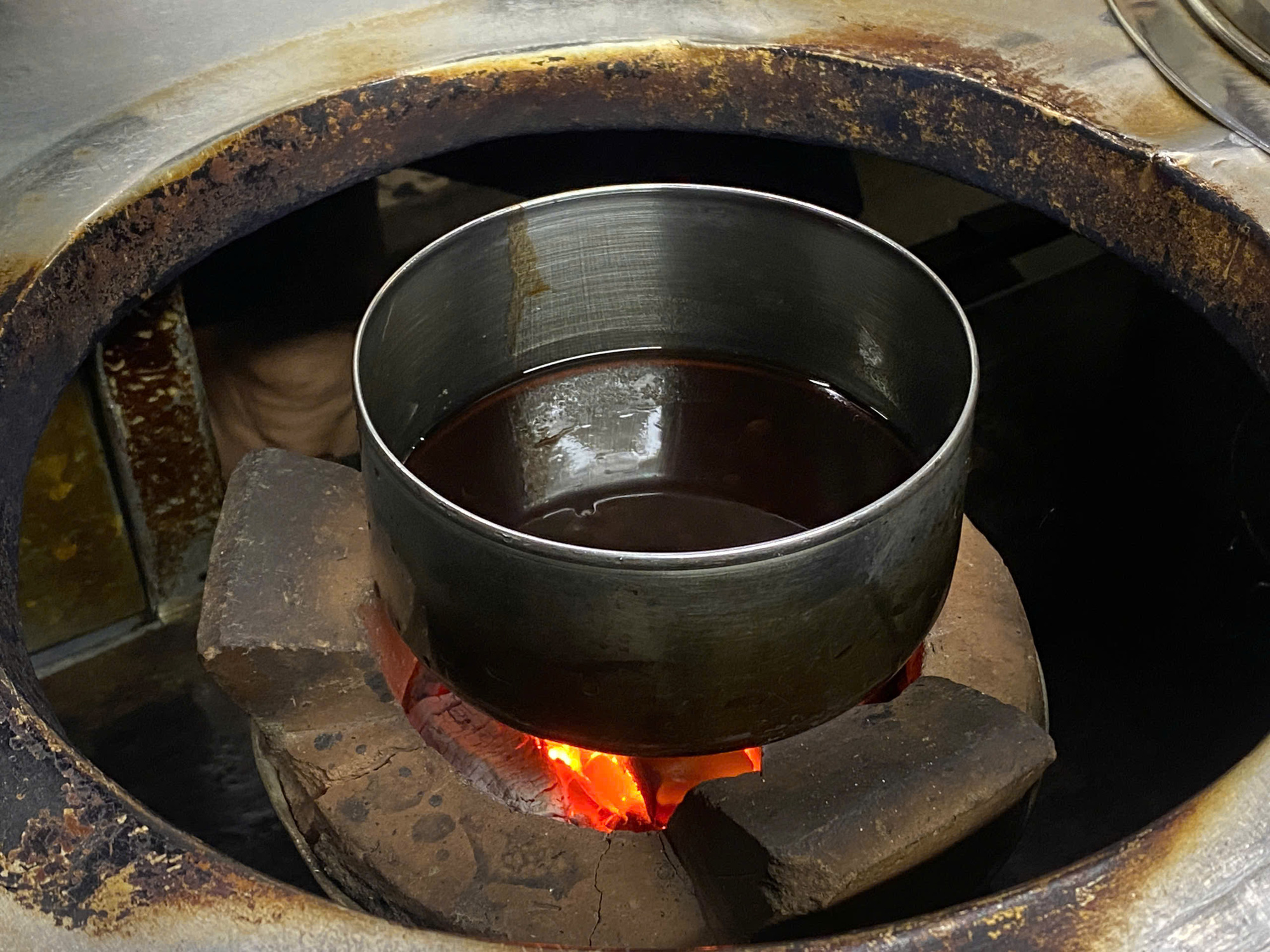
Sweet soup is usually heated in a small pot before being "introduced" to diners - Photo: DANG KHUONG
Curious diners easily guess that it is sugar water to make the tea sweeter. But few people know that it is a type of water cooked with herbs, helping to reduce the sweetness of the tea.
When asked, the owner humorously said: "That's my "magic water", it's necessary for the sweet soup to be delicious."
Only when eating here, observing each action of the owner, can diners deeply feel the meticulousness and carefulness of the skillful fingers "magically" making each cup of sweet soup.
Controversy over the price of 45,000 VND/cup
One of the most popular teas among customers, some even consider it the shop's "treasure", is almond ginkgo tea.
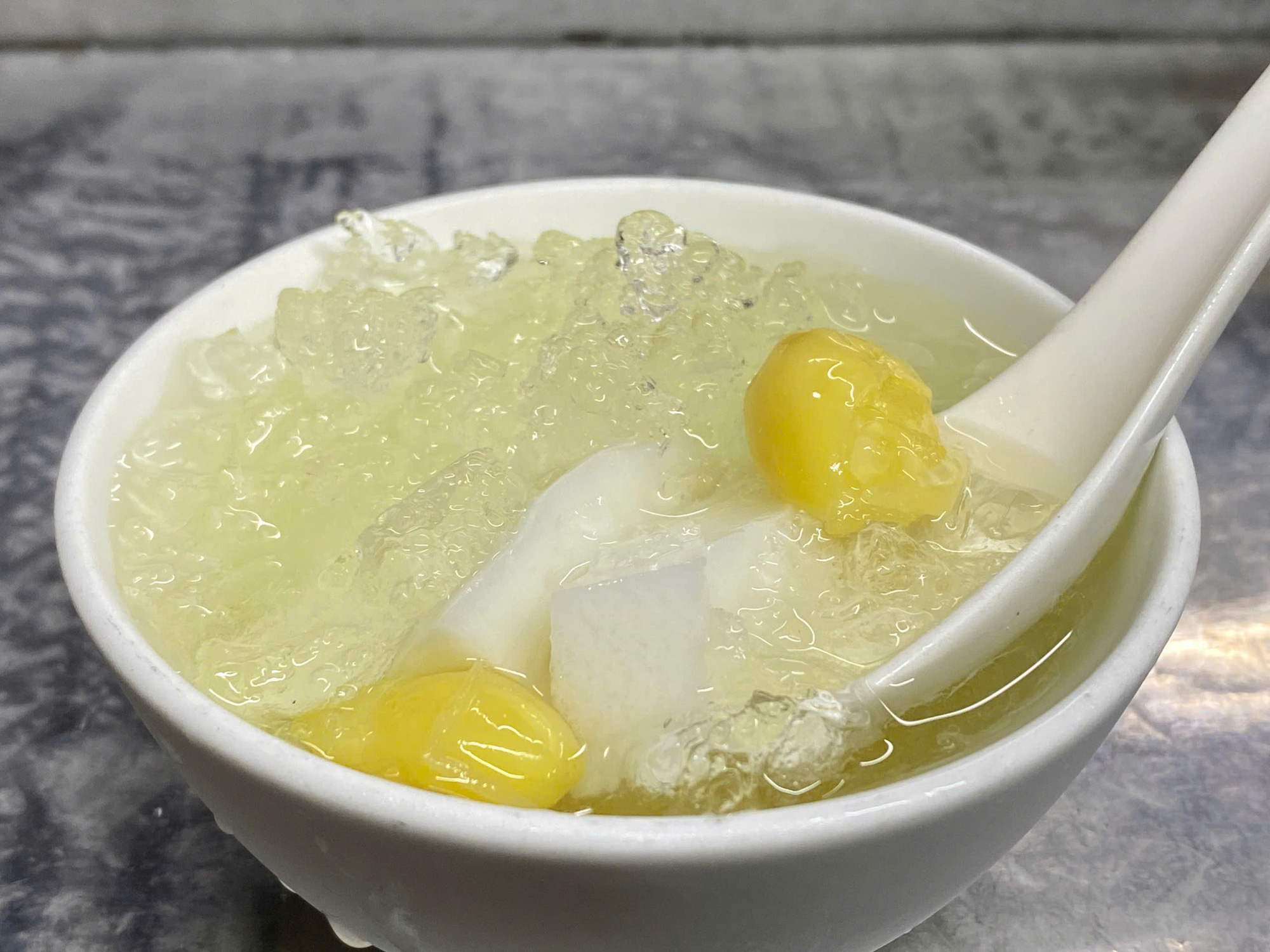
Ginkgo and almond dessert is considered the shop's "treasure" - Photo: DANG KHUONG
Every time he serves the tea to his customers, the shop owner often says, "You can tell if the tea is good or bad after just one sip." Indeed, the tea is very refreshing, sweet, and slightly greasy, especially with the aroma of almonds and ginkgo.
The almond part is made into jelly, diners will feel a bit fishy when biting into it, but the bitter taste of ginkgo biloba soothes the fishy feeling and helps the overall bowl of tea blend better.
The owner said this is a specialty that diners cannot find anywhere else with a similar flavor.
Besides, red bean sweet soup also has a strong attraction, because it not only stimulates the taste buds but also arouses the curiosity of the eater.
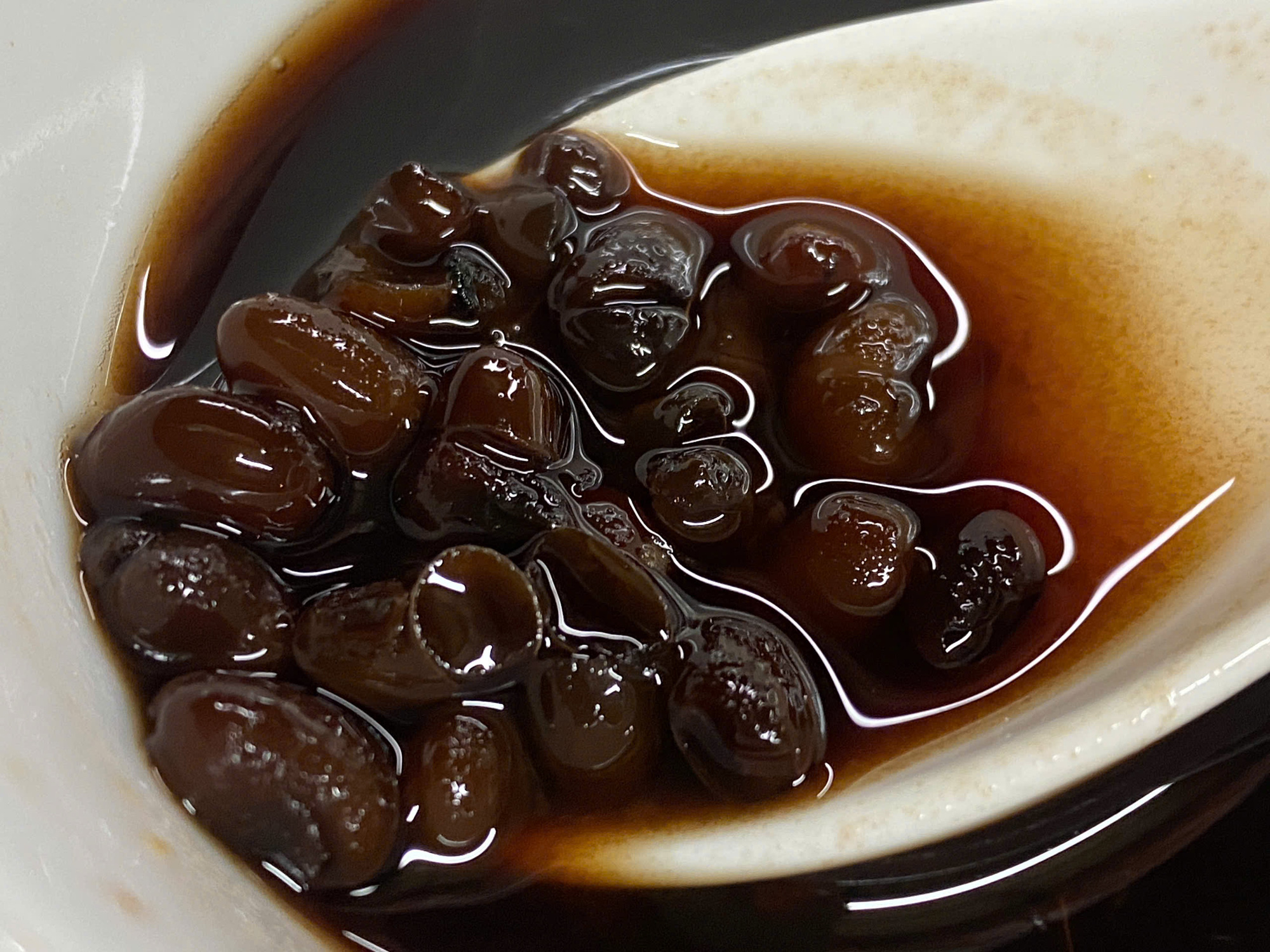
Red bean dessert has a strong appeal thanks to its unique flavor and aroma - Photo: DANG KHUONG
When eating red bean sweet soup, some diners guessed among themselves what the mild, fresh, "familiar but can't remember" aroma was. The seller shared that it was dried tangerines cooked with the sweet soup.
The aroma of the tangerine eliminates the fishy taste of the red beans. Moreover, in Chinese cuisine, this cooking method also makes the dish medicinal. The tea also has a fragrant bean scent, making diners think that it is the liquid that flows from the beans.
Bringing a unique experience to diners, the dessert shop still receives mixed reviews for its price of 45,000 VND.
In the Google Maps review section, a diner shared:
"A cup of 3 sliced lotus roots and 3-4 ginkgo biloba for 45,000 VND is probably a bit expensive even though you can feel the refined cooking method and less sweetness."
Several other diners agreed and said this dish is worth trying and not coming back for.
The common "indignation" of customers coming to the restaurant is that this is a sidewalk restaurant, without air conditioning but still keeps the price too high, equal to a bowl of noodles.
However, some customers who ate at the restaurant also said that they were from Hanoi and had been customers of the restaurant for a long time. When they had to go to Saigon, they would stop by the restaurant first for a drink before getting down to work.
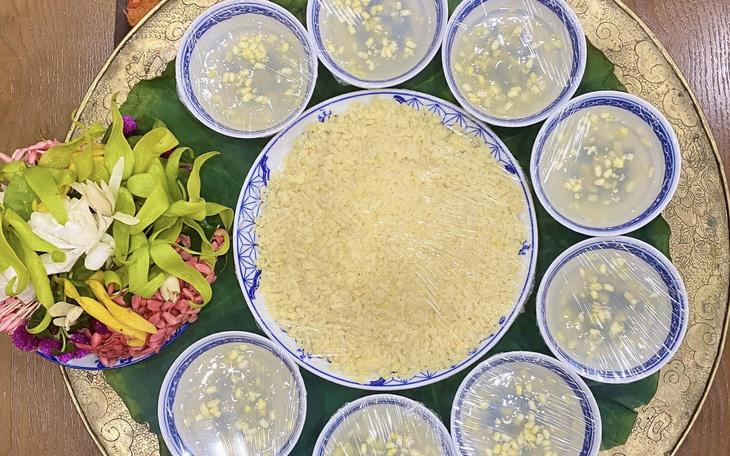 Sticky rice with sweet soup calls Vu Lan season back
Sticky rice with sweet soup calls Vu Lan season backSource: https://tuoitre.vn/xe-che-lam-vinh-mau-va-mon-bao-vat-bach-qua-hanh-nhan-20240912212957653.htm


![[Photo] Ministry of Defense sees off relief forces to the airport to Myanmar for mission](https://vstatic.vietnam.vn/vietnam/resource/IMAGE/2025/3/30/245629fab9d644fd909ecd67f1749123)


![[Photo] Prime Minister Pham Minh Chinh receives delegation of leaders of US universities](https://vstatic.vietnam.vn/vietnam/resource/IMAGE/2025/3/31/8be7f6be90624512b385fd1690124eaa)
![[Photo] 2nd Conference of the Party Executive Committee of Central Party Agencies](https://vstatic.vietnam.vn/vietnam/resource/IMAGE/2025/3/31/8f85b88962b34701ac511682b09b1e0d)

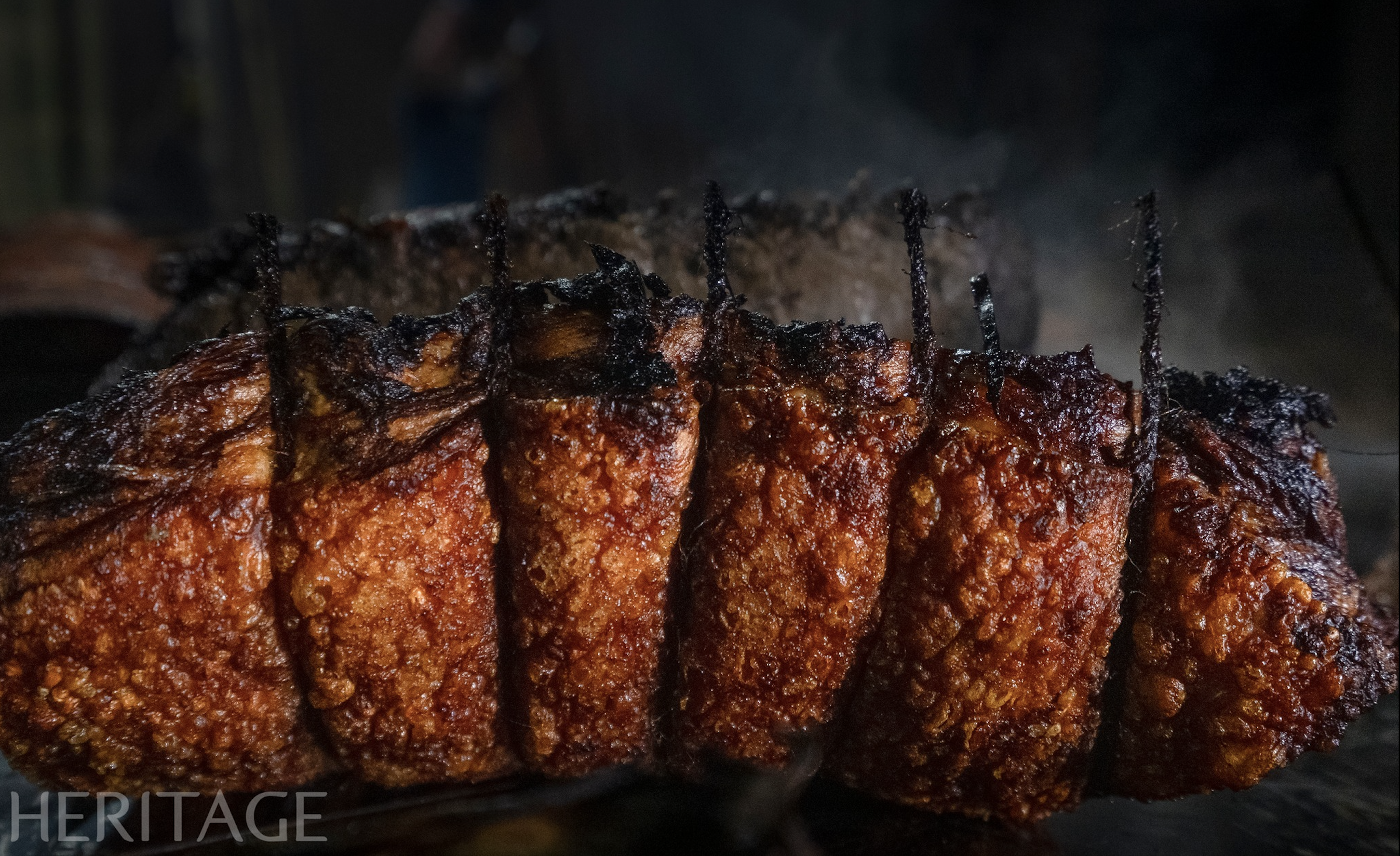

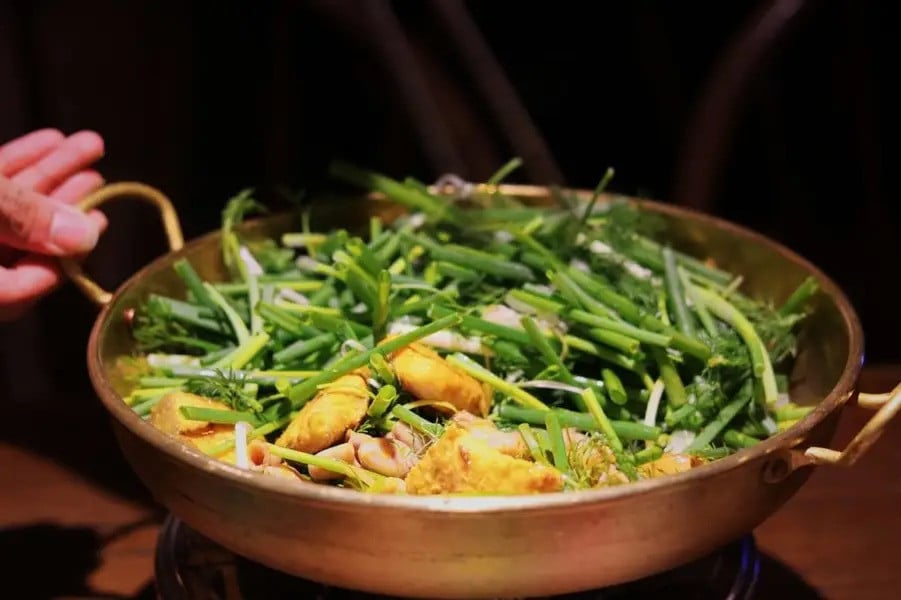



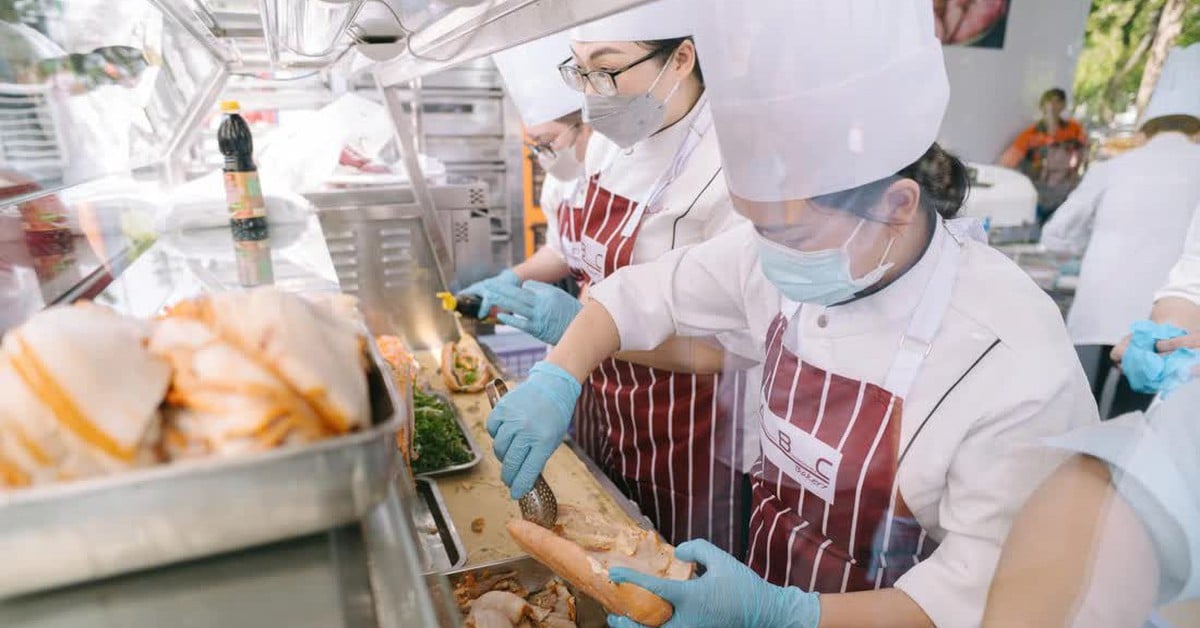



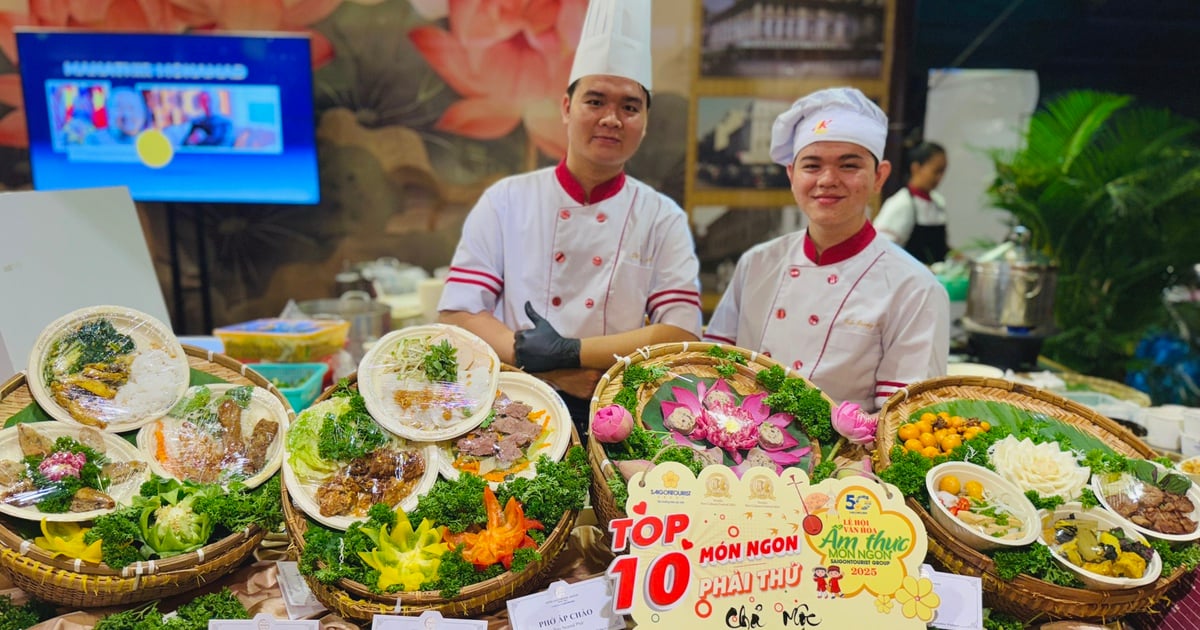

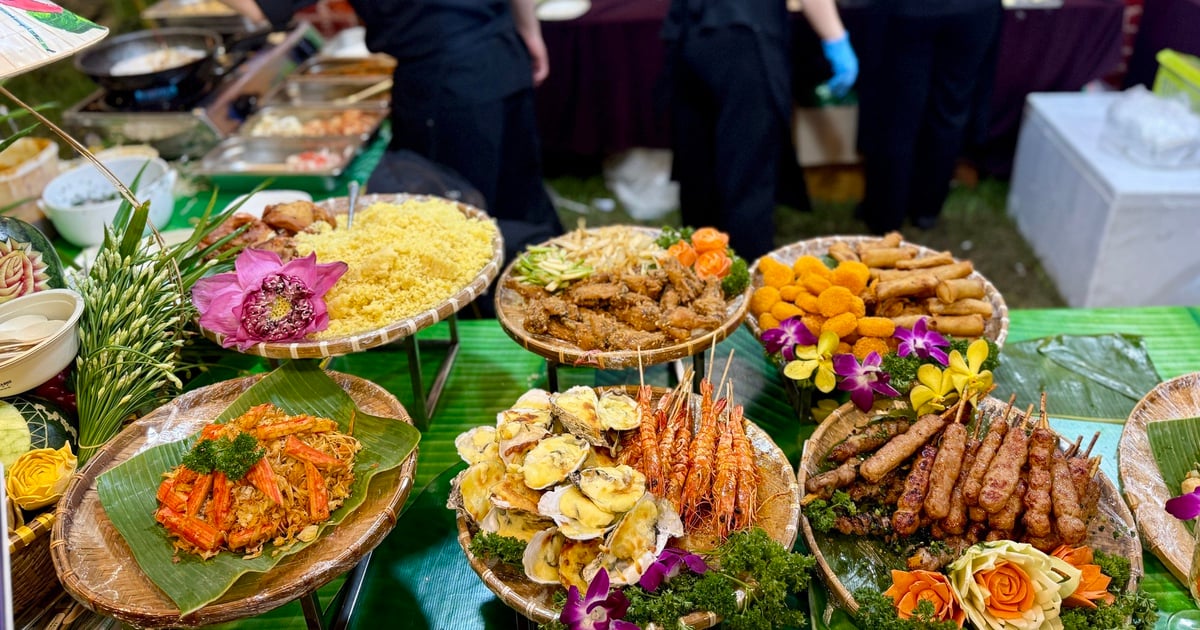
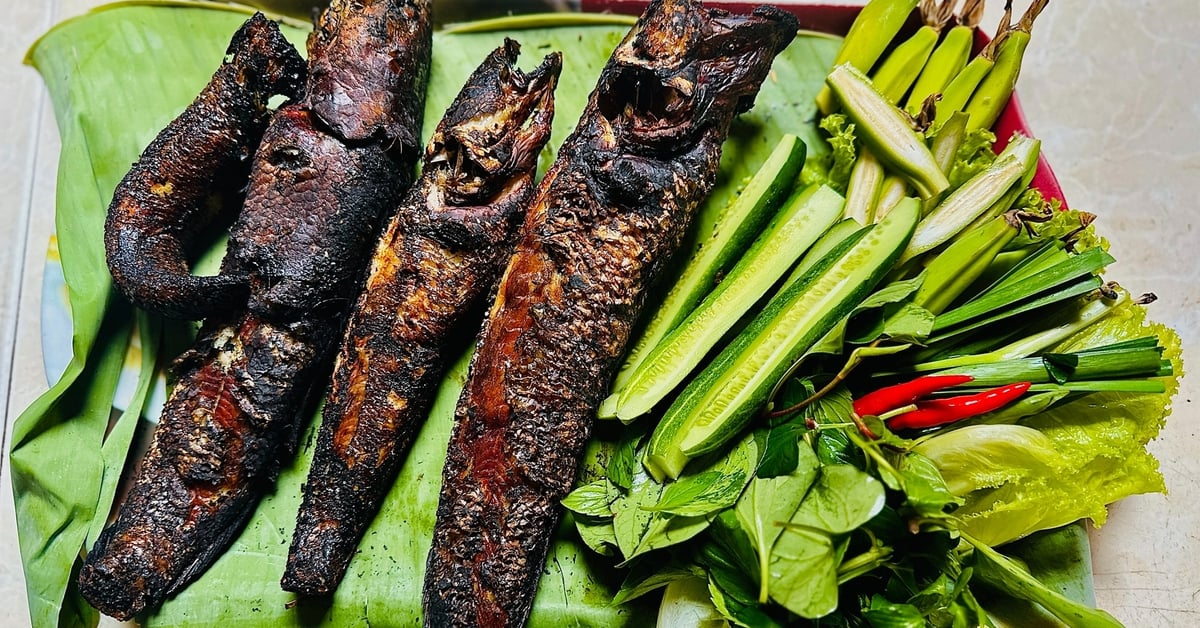






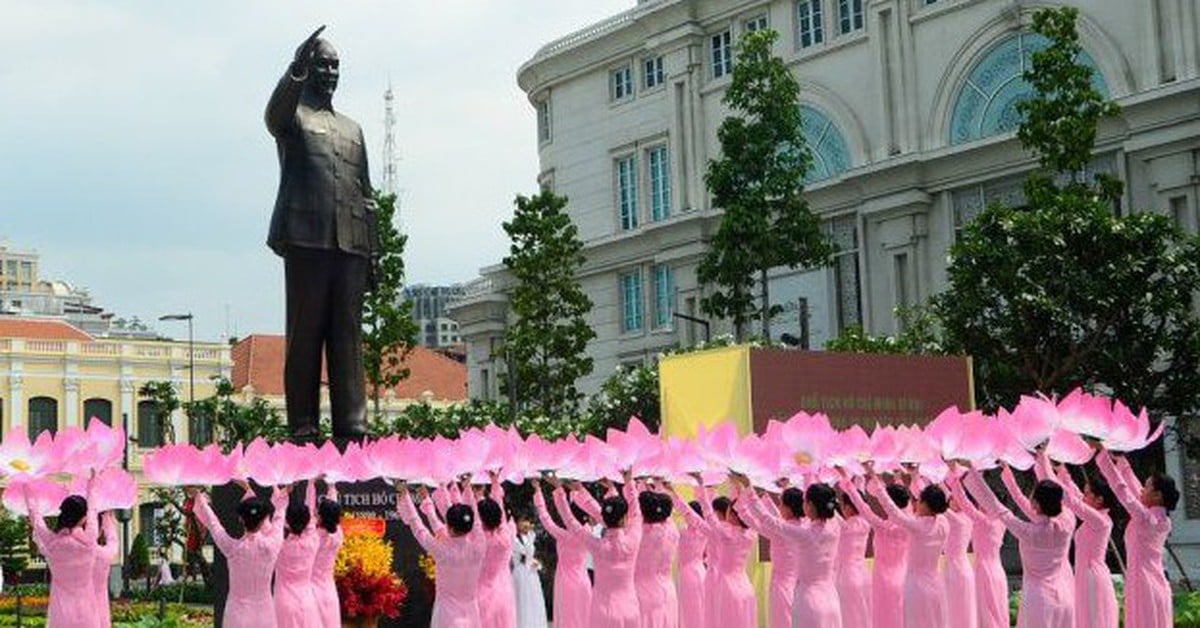





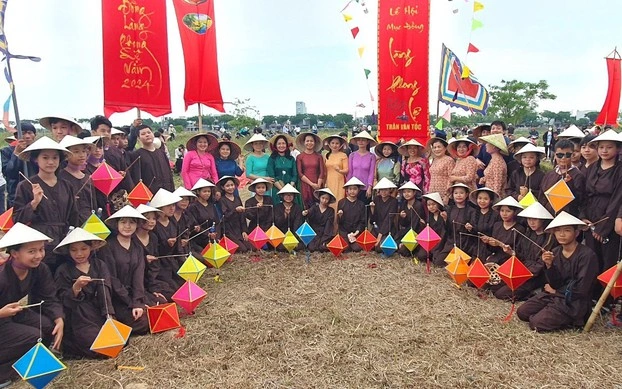





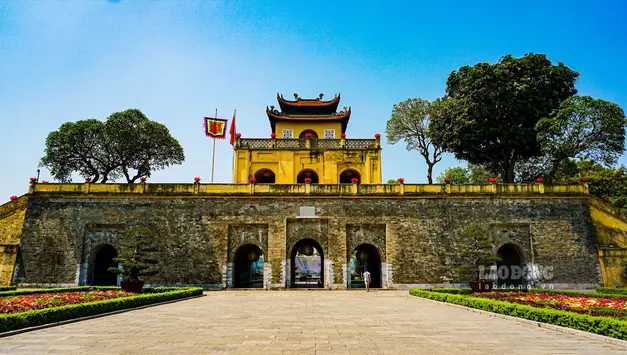





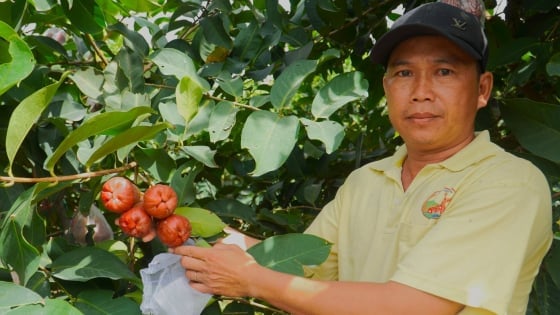




































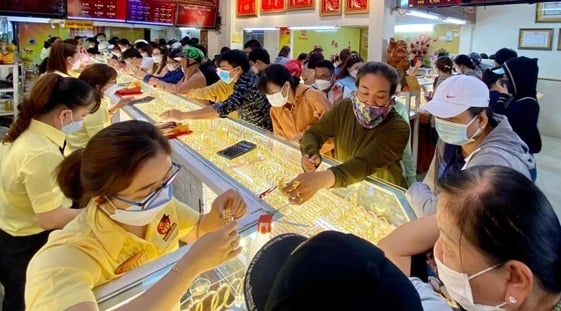











![[REVIEW OCOP] An Lanh Huong Vet Yen Cat](https://vstatic.vietnam.vn/vietnam/resource/IMAGE/2025/3/27/c25032328e9a47be9991d5be7c0cad8c)



Comment (0)